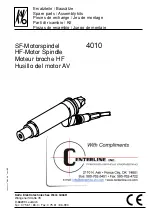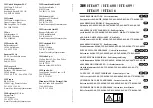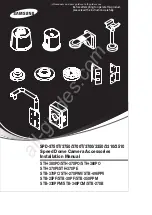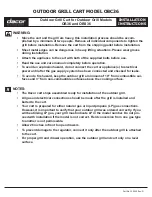
Vacuum interrupter/
operator
Primary disconnects
Figure 10: Upper and lower primary
disconnects (outer-phase barrier removed)
is a side view of the circuit breaker with
the outer-insulating phase barrier removed
to show details of the primary disconnects.
Each circuit breaker has three upper- and
three lower-primary disconnects. Upper-
primary disconnects are connected to the
stationary contacts of the vacuum
interrupters, and the lower-primary
disconnects are connected to the movable
contacts. Each disconnect arm has a set of
multiple spring-loaded fingers that mate
with bus bars in the metal-clad switchgear.
The number of fingers in the disconnect
assembly varies with the continuous and/
or interrupting rating of the circuit breaker.
There are three insulating push rods. Each
push rod connects the movable contact of
one of the vacuum interrupters to the jack
shaft driven by the closing and tripping
mechanism. Flexible connectors provide
secure electrical connections between the
movable contacts of each vacuum
interrupter and its bottom-primary
disconnect.
Phase barriers
Figure 11: Type 38-3AH3 vacuum circuit
breaker with inter-phase and outer-phase
barriers installed on page 17 is a rear view
of a type 38-3AH3 vacuum circuit breaker
that shows the outer- (phase-to-ground)
and interphase-insulating barriers. These
glass-polyester insulating barriers are
attached to the circuit-breaker frame and
provide suitable electrical insulation
between the vacuum-interrupter primary
circuits and the housing.
Stored-energy operating mechanism
The stored-energy operating mechanism
of the type 38-3AH3 vacuum circuit
breaker is an integrated arrangement of
springs, solenoids and mechanical devices
designed to provide a number of critical
functions. The energy necessary to close
and open (trip) the contacts of the vacuum
interrupters is stored in powerful tripping
and closing springs. The closing springs
are normally charged automatically, but
there are provisions for manual charging.
The operating mechanism that controls
charging, closing and tripping functions is
fully trip-free. Trip-free requires that the
tripping function prevail over the closing
function as specified in ANSI/IEEE
C37.04-1999, clause 6.9. The operation of
the stored-energy mechanism will be
discussed later in this section.
Figure 10: Upper and lower primary disconnects (outer-phase barrier removed)
16
















































